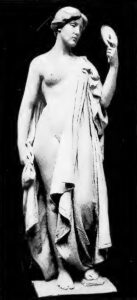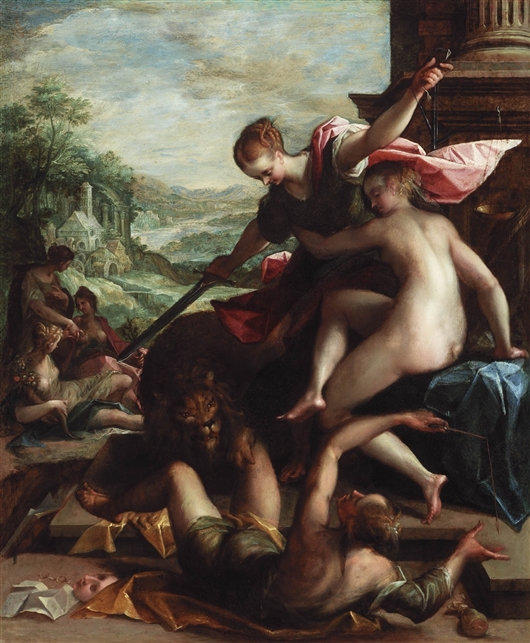
“Truth,” one of six virtue statues being placed on the Minnesota State Capitol, ca. 1901, St. Paul, MN, Minnesota Historical Society Collections, Unknown photographer, Wikimedia Commons.
A succinct report, Fighting Bogus Information About The Art Market – 2021 has been published by the 5,000 member art business umbrella organization CINOA. The March 2021 report identifies false claims made by governmental agencies, international organizations and in numerous academic papers, propagating and repeating what CINOA calls “bogus data” that justifies the introduction of legislation with far-reaching implications for the international art market, privacy rights, and private property. This legislation includes the European Union’s 2019 import licensing regulations on art and antiquities and anti-money laundering legislation in the EU and pending in the US.
What CINOA finds most alarming is the knowing propagation of these false “facts” by law enforcement and law and policy-making bodies themselves. Subsections of the linked report identify instances of widespread acceptance of false data and the effect this acceptance has had. The report recites the false claims and provides reliable sources for correct information.

Artist Daniel Chester French’s original plaster model for the statue of “Truth” for the Minnesota State Capitol, Source: The Western Architect, Volume 4, Number 10. October 1905. Minneapolis, Minnesota, Wikimedia Commons.
Among CINOA’s key points are that:
- The FBI and insurance companies have found that domestic burglaries, not crimes within the art trade, are the single biggest cause of crime linked to artworks
- The World Customs Organization has consistently found that international crime involving artworks and other cultural property is by far the smallest category of risk that it tracks, and that art-related crime barely registers compared to drugs, arms, or human trafficking.
- In 2020, the UK Government’s national risk assessment concluded that the risk of terrorist financing through the art market was “low”.
- A 2020 report by the RAND Corporation, arguably the most highly respected independent research organization in the United States, found that claims regarding high levels of crime associated with the art market were groundless.
- Dedicated law enforcement investigations over years have not shown that trafficked artworks fund terrorism.
- The European Commission, Interpol, US Immigration and Customs Enforcement, UNESCO, the United Nations Office for Drugs and Crime (UNODC) and numerous academic studies have all published false claims regarding the art trade.
- UNESCO’s major 2020 campaign attacking the art market and accusing it of being responsible for funding terrorism was exposed as utterly fraudulent. Despite being shown how the headline figure accompanying the campaign was also demonstrably bogus, UNESCO continues to promote it. The UNESCO officials responsible remain in post.
CINOA, like other art trade organizations, advocates prosecuting criminals and halting criminal activity in every sphere. The organization points out that the art trade suffers most when a criminal activity is ascribed to it.
In debunking the false claims made about the art market, particularly about the antiquities trade, the CINOA report cites to data from official governmental agencies and well-respected think tanks. It notes, however, that despite the ready availability of information in sources such as the World Customs Organization’s Illicit Trade Report and analyses by the Rand Corporation, governments have instead based legislation on wildly exaggerated claims for which the lack of documentation of crime is blamed on a mysterious, hidden criminal conspiracy. The anti-trade advocates claim that if you can’t find evidence of crime, and you can’t prove crime exists, that can only mean that the criminals are bigger and more clever than you thought.
Read the full report: FIGHTING BOGUS INFORMATION ABOUT THE ART MARKET – 2021
 Hans von Aachen (1552–1615), The triumph of Truth, circa 1598, oil on copper, Detroit Institute of Arts, Wikimedia Commons, public domain.
Hans von Aachen (1552–1615), The triumph of Truth, circa 1598, oil on copper, Detroit Institute of Arts, Wikimedia Commons, public domain. 

